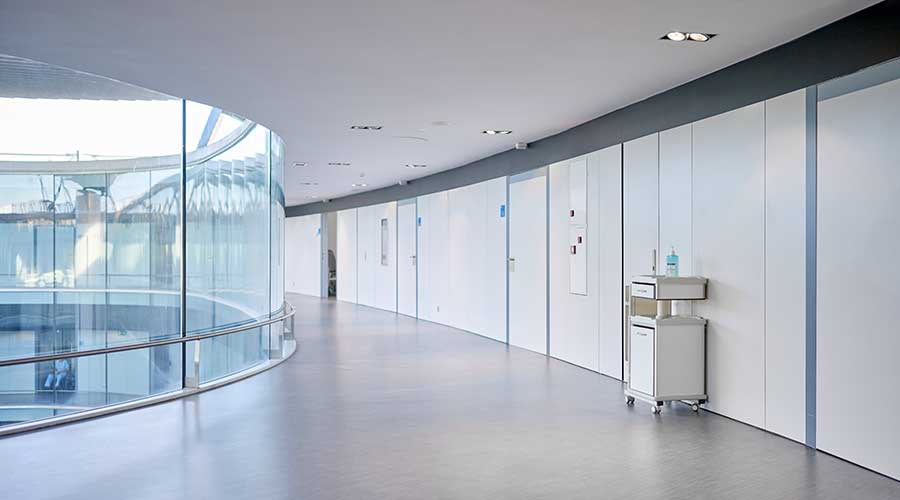As the COVID-19 pandemic continues in some regions, healthcare facilities managers are assessing the impact of the last two and half years on senior care facilities. RMany residents have gone through extended periods without being able to interact with loved ones during lockdown, leavingmany senior citizens feeling isolated. Now, families are prioritizing facilities that not only have luxury amenities, but also a sense of community.
Healthcare Facilities Today talked with Blima Ehrentreu, CEO and founder of The Designers Group, on the reasons living communities are emphasizing connectivity and wellness for residents, and what this means for future developments.
Healthcare Facilities Today: How is technology playing a role in upgraded senior care facilities? What can we expect in the coming years?
Ehrentreu: Purposeful integration of technology is key to upscale senior living environments, particularly as it relates to catering to the mobility, wellness and medical needs of residents. Technology can be seamlessly tied into various aspects of a facility, as to not sacrifice the aesthetic. A recent project of ours, the King David Center in Brooklyn, New York, features a HydroWorx 1200 aqua therapy pool with hydraulic floors, underwater treadmills, resistance jet technology, automated water temperature capability and computer systems that satisfy the varied demands of both traditional physical rehabilitation and mental wellness. We created a specific area to house the pool with a complementary, yet sophisticated aesthetic that feels more like a spa than a water-therapy space. In the coming years, I believe we’ll continue to see technology appear in wellness applications such as this example, directly impacting the treatment and health of residents.
HFT: As the demand for senior care facilities increases, how can managers provide a better sense of community for staff and residents?
Ehrentreu: Senior care facilities must encourage their residents to maintain active lifestyles, especially as it relates to social interaction. By designating common spaces for different types of group activities, communities encourage their residents to come together, whether they’re completing an activity together in the lobby, exercising in the gym or having breakfast in the dining rooms. Soothing color palettes, comfortable furniture and accessible layouts collectively curate the type of environment that people want to spend time in, inherently sparking conversation and encouraging a sense of community and togetherness. We are also continuing to implement more hospitality-inspired spaces, like activity rooms and spas, to encourage residents to take part in a community-building experience.
HFT: How can design elements help with emergency preparedness in senior care facilities? What should facility managers be aware of?
Ehrentreu: The design of senior communities should always prioritize the mobility and safety of their residents. As designers, we always want to ensure that layouts are clear of hazards and accessible for all residents. This means ensuring that all areas are accessible by wheelchair and walker, making doors and hallways wide enough, as well as being mindful of any obstructions on the floor that may interfere with an individual’s level of mobility.
Proper wayfinding is also critical to ensure the safety of residents. We make sure all of our designs include clearly marked entrances and exits, making paths of travel simple and identifiable. Select materials can also assist in wayfinding, such as the utilization of floor tiles that continue in a certain direction to lead residents to exits. As for facility managers, they should always have emergency plans in place with safety drills to exercise preparedness so that residents know how to utilize the resources available to them in any situation.
HFT: In what ways will healthcare facilities remain competitive when it comes to renovations and new construction?
Ehrentreu: Healthcare facilities should reimagine the relationship they have with their residents and patients, opting to deliver five-star care in a comfortable, welcoming environment. In order to remain competitive, senior living environments should support and facilitate comprehensive programs of cutting-edge technology, hospitality-style service and amenities, five-star dining and wellness support through proper infrastructure and planning. For example, in a recent project our team implemented amenities that are designed to optimize the physical, emotional and spiritual wellbeing of each resident. Whether it be a full rehab gym, café or therapy pool, these types of thoughtful opportunities within a space can provide memorable, helpful, and beautiful experiences in the everyday lives of residents.
Mackenna Moralez is the associate editor of the facilities market.

 Rethinking Facilities: A New-Generation Approach to Behavioral Healthcare
Rethinking Facilities: A New-Generation Approach to Behavioral Healthcare ThedaCare to Open Medical Center in Fond du Lac, Wisconsin
ThedaCare to Open Medical Center in Fond du Lac, Wisconsin UF Health Hospitals Rely on Green Globes to Realize Their Full Potential
UF Health Hospitals Rely on Green Globes to Realize Their Full Potential How Healthcare Facilities Can Be Truly Disaster-Resilient
How Healthcare Facilities Can Be Truly Disaster-Resilient TriasMD Breaks Ground on DISC Surgery Center for San Fernando Valley
TriasMD Breaks Ground on DISC Surgery Center for San Fernando Valley